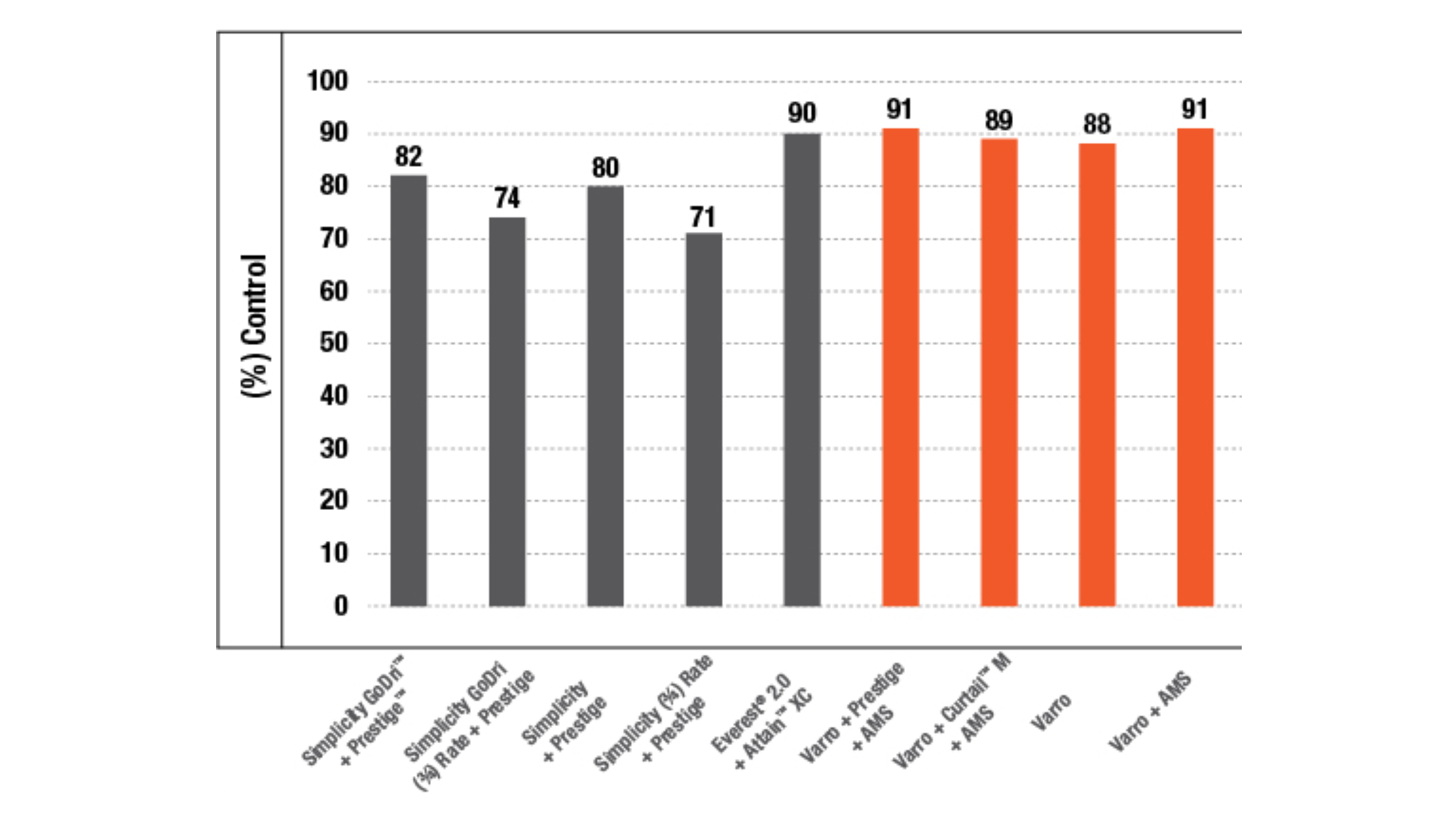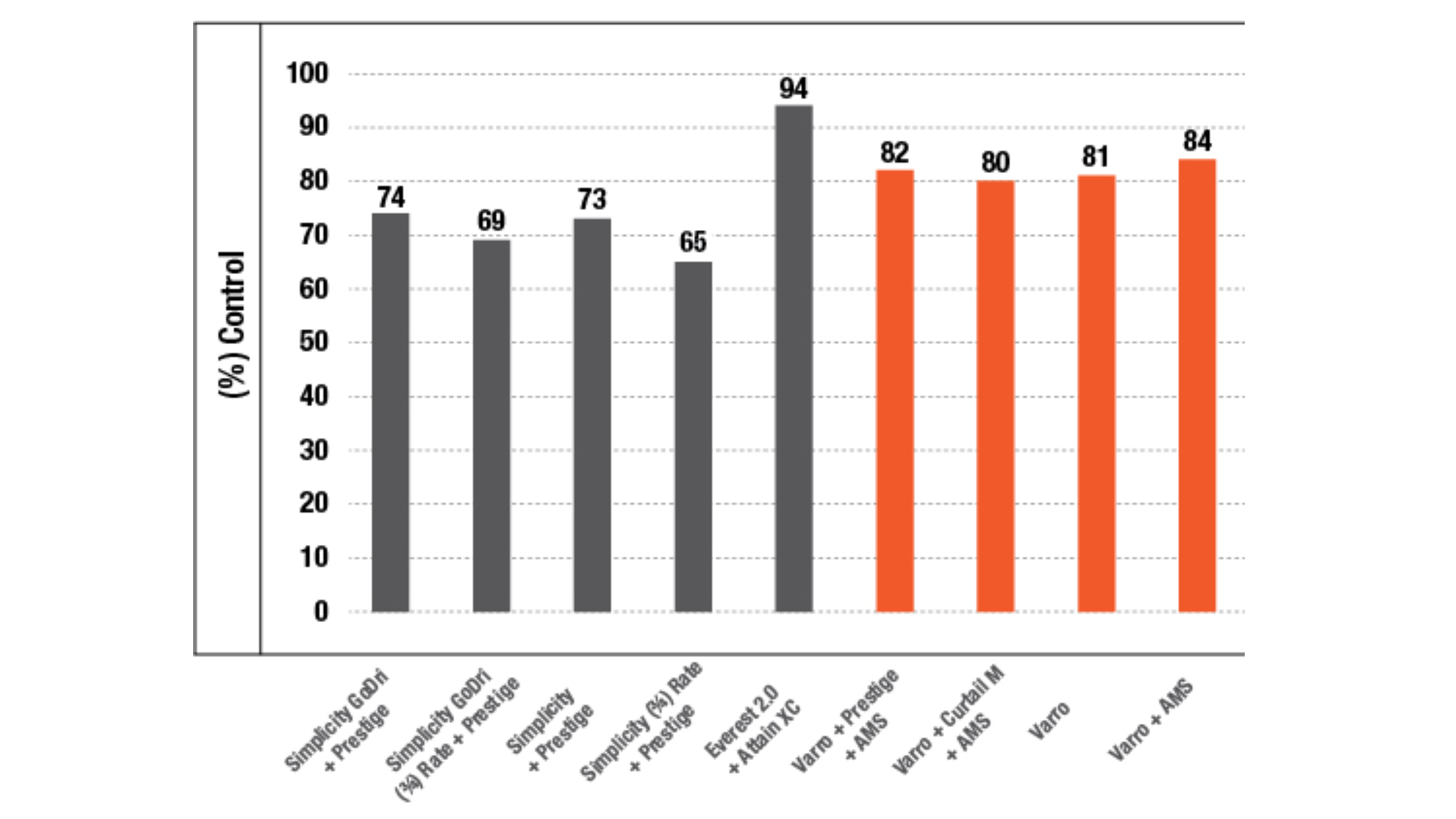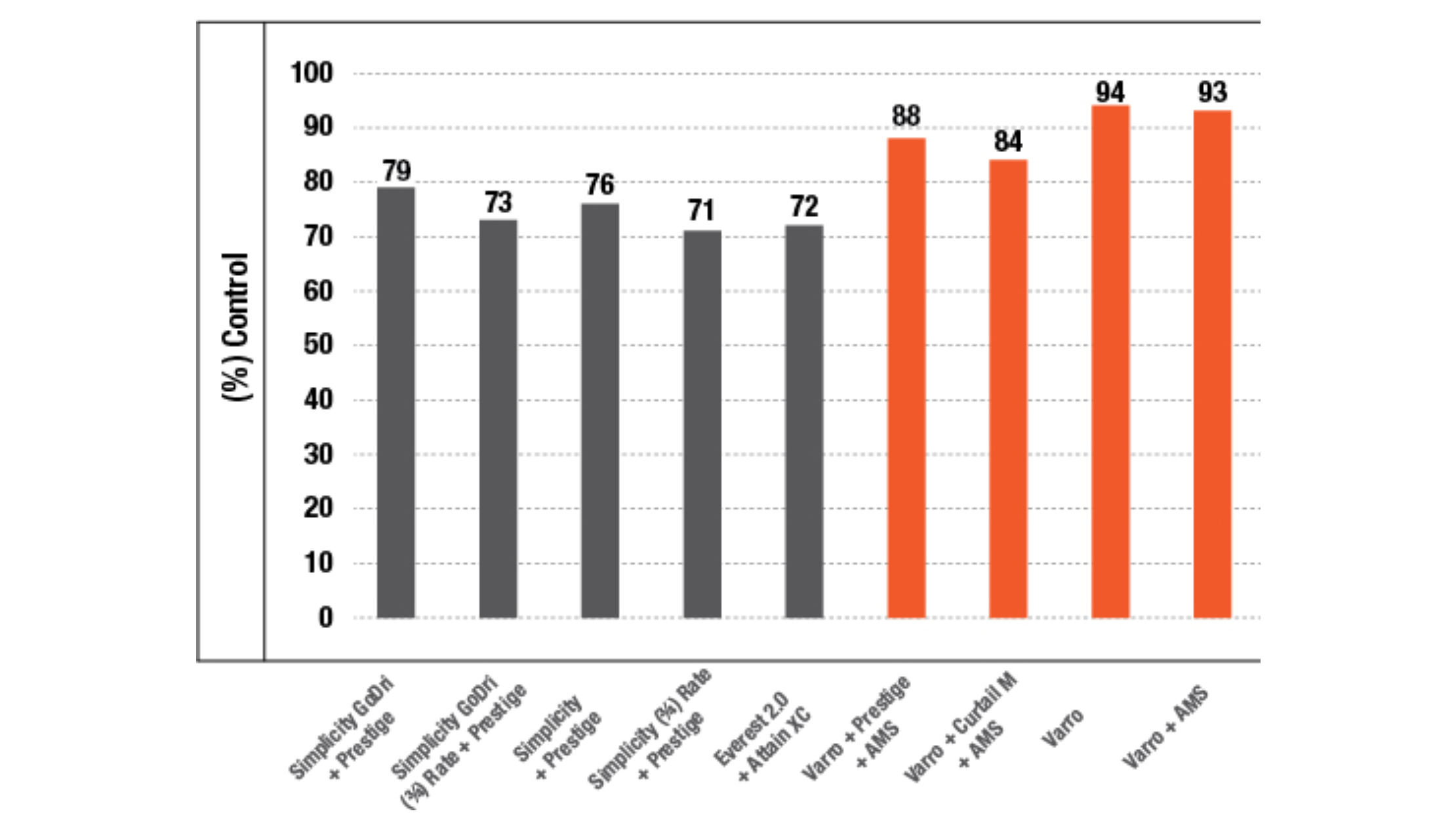Varro
title-product-highlights
Strong performance on grass weeds like wild oats, barnyard grass, Persian darnel, green and yellow foxtail, canary seed and Japanese brome
Group 2 technology allows for control of problematic Group 1-resistant wild oats and foxtail
Allows crop rotation flexibility to sensitive crops like dry beans and lentils
Enhances the overall control of its broadleaf tank-mix partners
Exceptional crop safety
Registered for ground and aerial application
product-details-heading
| crops | category | groups-active-ingredients | formulation-type | packaging |
|---|---|---|---|---|
Wheat (Durum, Spring, Winter) | Broadleaf & Grass Weeds | 2 Thiencarbazone-methyl | Liquid OD Formulation | 8 L jug = 40 ac. |
| crops |
|---|
Wheat (Durum, Spring, Winter) |
| category |
|---|
Broadleaf & Grass Weeds |
| groups-active-ingredients |
|---|
2 Thiencarbazone-methyl |
| formulation-type |
|---|
Liquid OD Formulation |
| packaging |
|---|
8 L jug = 40 ac. |
| weeds-controlled | weeds-suppressed |
|---|---|
Canary seed Cleavers Green foxtail Barnyard grass Hemp-nettle | Wild buckwheat Yellow foxtail Japanese brome (Fall germinated) Lamb's-quarters Persian darnel |
| weeds-controlled |
|---|
Canary seed Cleavers Green foxtail Barnyard grass Hemp-nettle |
| weeds-suppressed |
|---|
Wild buckwheat Yellow foxtail Japanese brome (Fall germinated) Lamb's-quarters Persian darnel |
Performance Data
title-use-mixing




